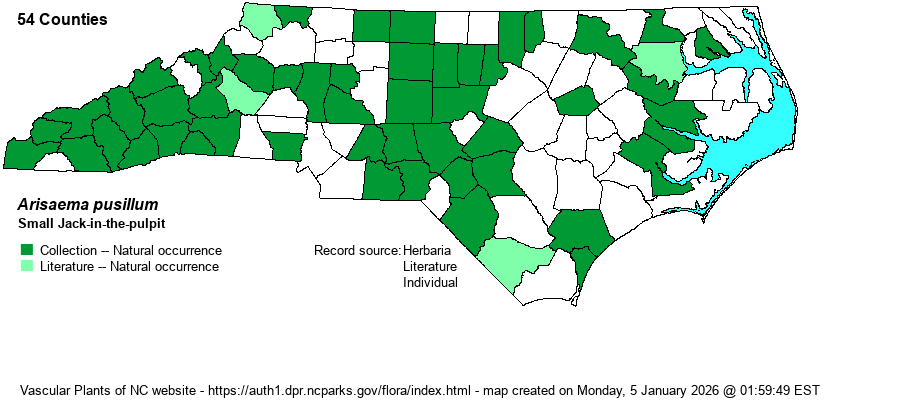| taxonName | relationship | relatedTaxonName | relatedTaxonRefText | relComments |
|---|
| Arisaema pusillum | = | Arisaema triphyllum ssp. pusillum | | |
| Arisaema pusillum | = | Arisaema triphyllum ssp. pusillum | | |
| Arisaema pusillum | = | Arisaema triphyllum ssp. pusillum | | |
| Arisaema pusillum | = | Arisaema triphyllum ssp. pusillum | | |
| Arisaema pusillum | = | Arisaema triphyllum ssp. pusillum | Flora of Virginia | |
| Arisaema pusillum | = | Arisaema triphyllum ssp. pusillum | Mayo, Bogner, & Boyce in Kubitzki (1998b). Key based on the references. | |
| Arisaema pusillum | = | Arisaema triphyllum ssp. pusillum | Mayo, Bogner, & Boyce in Kubitzki (1998b). Key based on the references. | |
| Arisaema pusillum | < | Arisaema triphyllum | Flora of North America (1993b, 1997, 2000, 2002a, 2002b, 2003a, 2004b, 2005, 2006a, 2006b, 2006c, 2007a, 2009, 2010) | |
| Arisaema pusillum | < | Arisaema triphyllum | Godfrey and Wooten (1979, 1981) | |
| Arisaema pusillum | < | Arisaema triphyllum | | |
| Arisaema pusillum | < | Arisaema triphyllum | Radford, Ahles, and Bell (1968) | |
| Arisaema pusillum | < | Arisaema triphyllum | Wofford (1989) | |
| Arisaema pusillum | < | Arisaema triphyllum | Wunderlin & Hansen Flora of Florida (3) | |
| Arisaema pusillum | = | Arisaema triphyllum var. pusillum | Gleason and Cronquist (1991) | |
| Arisaema pusillum | = | Arisaema triphyllum var. pusillum | Gleason (1952) | |
| Arisaema pusillum | = | Arisaema triphyllum | Fernald (1950) | misapplied |
| Arisaema pusillum | = | Arisaema triphyllum | | misapplied |
|
| Arisaema pusillum | < | Arisaema triphyllum ssp. pusillum | | |
| Arisaema pusillum | < | Arisaema triphyllum ssp. pusillum | Mayo, Bogner, & Boyce in Kubitzki (1998b). Key based on the references. | |
| Arisaema pusillum | < | Arisaema triphyllum ssp. pusillum | Mayo, Bogner, & Boyce in Kubitzki (1998b). Key based on the references. | (also see ssp. quinatum) |
| Arisaema pusillum | < | Arisaema triphyllum var. pusillum | Mayo, Bogner, & Boyce in Kubitzki (1998b). Key based on the references. | |
| Source: Weakley's Flora |

